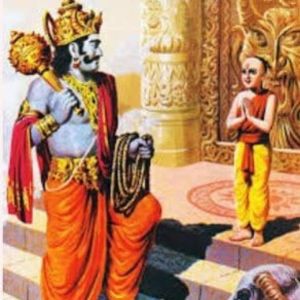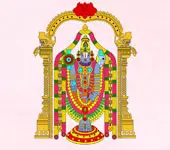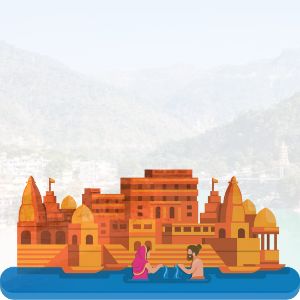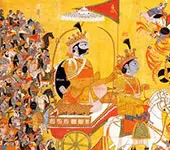Incarnations in Mahabharata: Main Characters
Whose incarnation was Draupadi?
In Mahabharata, Draupadi has been depicted as an incarnation of Shachi Devi.
Whose incarnation was Bhishma?
Bhishma was incarnation of one among the Ashta-Vasus.
Quiz
Who incarnated as Dronacharya?Transcript
(Click here to read more)
We have seen that the Kurukshetra war was a Devasura yuddha on earth. After Devas took full control of Swargaloka, the Asuras started taking birth on earth. Or you can say that the Asuras took incarnations on earth. As their number went on increasing, adharma also increased. The dharma - adharma balance was disturbed. Devas also took incarnations on earth. Then the fight between them happened. The Asuras on earth were destroyed. Dharma was reestablished. Now, we will take a look at who were some of the main characters of Mahabharat....
Transcript
(Click here)
We have seen that the Kurukshetra war was a Devasura yuddha on earth.
After Devas took full control of Swargaloka, the Asuras started taking birth on earth.
Or you can say that the Asuras took incarnations on earth.
As their number went on increasing, adharma also increased.
The dharma - adharma balance was disturbed.
Devas also took incarnations on earth.
Then the fight between them happened.
The Asuras on earth were destroyed.
Dharma was reestablished.
Now, we will take a look at who were some of the main characters of Mahabharata incarnations of.
Jarasandha was incarnation of Danava chief Viptachitti.
Shishupala was incarnation of Hiranyakashipu.
Prahlada's brother Samhrada incarnated as Shalya, the king of Bahleeka.
Anuhrada, another brother incarnated as Dhrishtaketu.
Bhagadatta was incarnation of Bashkala.
All the Asuras we spoke about in the erlier episodes, they all took inarnations as kings on eartha and most of them became the allies of the Kauravas.
Mahabharata gives a detailed description of this.
Drona was incarnation of Brihaspati.
Ashwatthama was incarnation of Mahadeva, Yama, Kama, and Krodha.
Bhishma, you know is incarnation of a Vasu.
Kripacharya was incarnation of Rudragana.
Satyaki was incarnation of Marudgana.
Drupada was also an incarnation of Marudgana, also Kritavarma, and king Virata.
Dhritarashtra was incarnation of a Gandharva called Hamsa.
Duryodhana was incaration of Kali.
Duryodhana's brothers were incarnations of Rakshasas.
Pandavas you know are incarnations of Yamaraja, Vayu, Indra, and Ashwini Kumaras respectively.
We have already see about their birth.
Kunti invoked Dharmaraja, Vayu, and Indra with the power of the mantra she had received from Sage Durvasa.
But even before this, even before her marriage with Pandu she had invoked Surya Deva.
Surya incarnated as Karna through her.
But Kunti became scared.
She put the child in a box and abandoned it in a river.
The box went floating in the river.
Adhiratha and his wife Radha found the child and raised him.
Adhirtha was Suta by caste.
He was in charge of Dhritarashtra's chariots.
The child was named Vasusshena.
He was Karna.
He only became famous as Karna.
Karna had an armor and ear ornaments on his body from the time of birth itself.
He was invincible by the power of these.
Karna had a big heart.
If anyone asked for anything when he was praying, he would give it.
Karna and Arjuna were going to be arch rivals.
Indra wanted success for his son Arjuna.
So Indra disguised as a Brahmin and went near Karna and asked for the kavacha and kundalas.
Kandra gave them without any hesitation.
Indra was surprized and impressed.
Indra gave Karna a shakti, a spear and said whoever you hit with this weapon, be it a Devata, Asura, Gandharva, Manushya, whoever it may be, he will be dead.
There is no doubt about it.
Karna became a friend, advisor, and ally of Duryodhana.
Abhimanyu was incarnation of Chandra Deva's son, Varcha.
While sending him to earth, Chandra had put a condition that he would not be able to stay without him for a long time.
He should return in the 16th year.
That's why Abhimanyu died at the age of 16.
Dhrishtadyumna was incarnation of Agni Deva.
Draupadi's sons were incarnations of Vishwedevas.
Shurasena was Krishna's paternal grandfather.
Kuntibhoja was a cousin of king Ugrasena.
Shurasena had promised Kuntibhoja that he would give him his first child.
Pritha was the daughter born to Shurasena.
As promised, Shurasena gave Pritha in adoption to Kuntibhoja.
She became Kuntibhoja's daughter, Kunti, the mother of the Pandavas.
Sriman Narayana took incarnation as Krishna.
Aidshesha incarnated as Baladeva.
Pradyumna was incarnation of Sanatkumara.
Lakshmi Devi incarnated as Rukmini Devi.
Apsaras incarnated as the 16,000 wives of Krishna.
Draupadi was incarnation of Shachi Devi.
There are two Devis called Siddhi and Dhriti.
Siddhi incarnated as Kunti and Dhriti incarnated as Madri.
Gandhari was incarnation of Mati Devi.
Getting knowledge about all these will confer long life and prosperity upon you, says Mahabharata.
Recommended for you
Third Boon Of Nachiketas

Learn about the third boon that Nachiketas asked for from Yamaraja....
Click here to know more..Meaning of Sri Venkatesha Suprabhatam- Part 2
 Click here to know more..
Click here to know more..
Ganga Stotram

देवि सुरेश्वरि भगवति गङ्गे त्रिभुवनतारिणि तरलतरङ्गे। श....
Click here to know more..
English Topics
Mahabharatam
Click on any topic to open
- 96 Two Curses That Worked against Karna
- 95 What is behind Calling the Five Brothers the Pandavas
- 94 Give up an Individual IF....
- 93 Fascinating Birth Story of the Kauravas
- 92 Overcoming Grief - Lessons from King Senajit's story
- 91 Yayati's Wisdom
- 90 Yayati's Story
- 89 Brahmacharis Can Bless And Curse
- 88 Human Nature - Comples Mix Of Good And Bad
- 87 Results Of Good Karma
Please wait while the audio list loads..
30
Ganapathy
Shiva
Hanuman
Devi
Vishnu Sahasranama
Mahabharatam
Practical Wisdom
Yoga Vasishta
Vedas
Rituals
Rare Topics
Devi Mahatmyam
Glory of Venkatesha
Shani Mahatmya
Story of Sri Yantra
Rudram Explained
Atharva Sheersha
Sri Suktam
Kathopanishad
Ramayana
Mystique
Mantra Shastra
Bharat Matha
Bhagavatam
Astrology
Temples
Spiritual books
Purana Stories
Festivals
Sages and Saints

